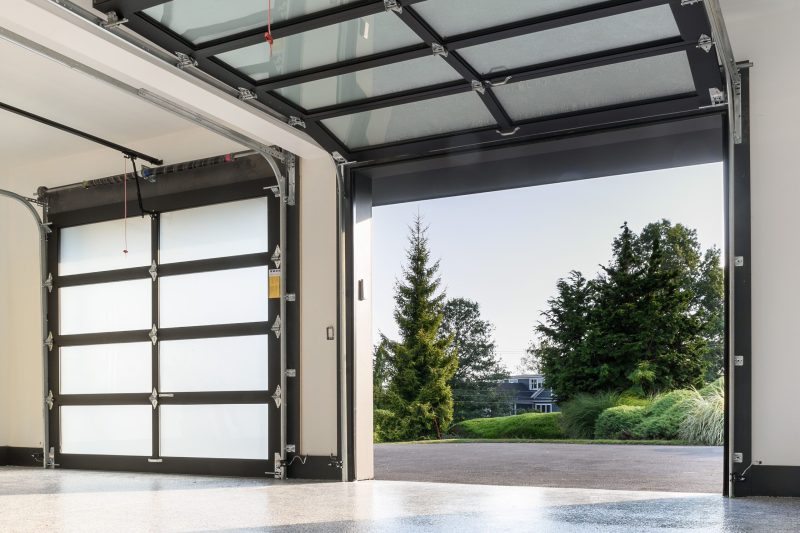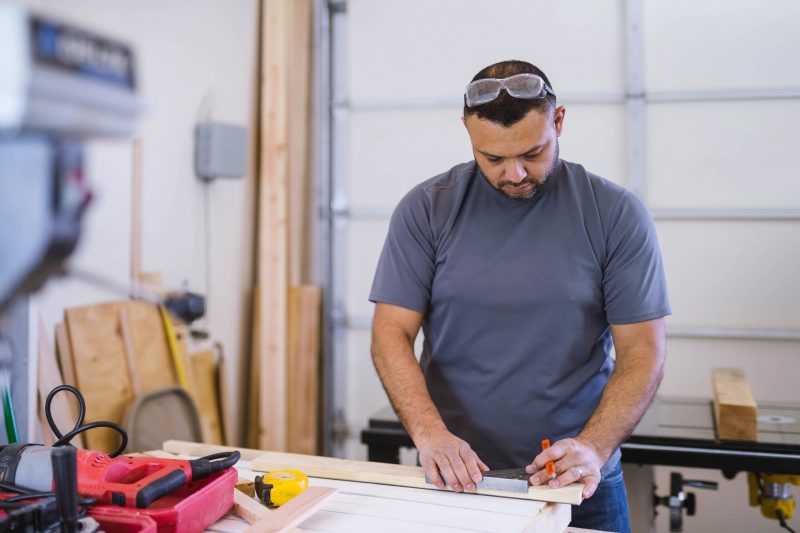How To Replace a Garage Door


We may be compensated if you purchase through links on our website. Our Reviews Team is committed to delivering honest, objective, and independent reviews on home products and services.
More
Replacing a garage door can dramatically enhance your home’s functionality and curb appeal. An updated door improves your home’s aesthetic and provides better security and energy efficiency. In this video, This Old House carpenter Nathan Gilbert guides a homeowner through replacing an outdated garage door with a modern, safer alternative. We’ll also offer tips throughout the entire replacement process, from selecting the ideal door material to maintaining your new garage door for long-lasting performance.
Why Replace Your Garage Door?
Modern garage doors often come with advanced safety features, such as photo-eye sensors that prevent the door from closing if an object is detected in its path. This is especially important for households with young children or pets. Enhanced insulation properties also contribute to better energy efficiency, saving money on heating and cooling. In addition, a modern and stylish garage door can significantly boost your home’s curb appeal and overall value.
Assess Your Current Garage Door
Before beginning the replacement process, evaluate your existing garage door system for the following issues:
- Signs of wear and tear: Examine the garage door for any visible damage, such as dents, rust, or cracks, indicating that components may need replacing or repairing.
- Outdated safety features: Check if your garage door has modern safety features like auto-reverse and motion sensors, as older models may lack these essential safety improvements.
- Noise levels during operation: Listen for any unusual noises, such as grinding or banging, which could suggest worn-out or misaligned parts that may affect the door’s performance.
- Poor energy efficiency: Evaluate the insulation and overall energy efficiency of your garage door to determine whether it helps regulate the temperature and reduce energy costs.
Choosing a New Garage Door
When selecting a new garage door, consider the following factors:
- Material: Steel doors are popular for their durability and low maintenance, while wood doors offer a classic look but require more upkeep. Composite materials can provide the best of both worlds, combining the aesthetics of wood with the durability of steel.
- Insulation properties: Choose a garage door with good insulation to enhance energy efficiency and comfort. It will reduce heat loss in winter and keep the garage cooler in summer. Adequate insulation is especially important if the garage is used as a workspace or living area.
- Style and design: To enhance curb appeal, select a style and design that complements your home’s exterior, whether you prefer traditional, contemporary, or custom looks.
- Budget: Determine your budget, including installation costs, and explore options within your price range that balance quality and affordability.
- Safety features: Make sure the new door includes modern safety features such as auto-reverse mechanisms and motion sensors to protect your family and prevent accidents
Tools and Materials Needed to Replace a Garage Door
Gather the following tools and materials for your garage door replacement:
Tools
- Brad nailer
- Impact driver with socket adapter
- Level
- Miter saw
- Quick-clamp
- Socket set
- Tape measure
- Wrench set
- Worktable
Materials
- New garage door panels
- Hinges and brackets
- Rollers
- Vinyl trim
-
Tape measure
-
Quick-clamp
-
Wrench set
-
Socket set
-
Impact driver with socket adapter
-
Worktable
-
Level
-
Miter saw
-
Brad nailer
Remove the Old Garage Door
Before installing the new door, you must remove the existing one. Follow these steps:
- Disconnect the garage door opener.
- Lift the existing door up so that it is fully open.
- Use a C-clamp placed in the track to keep the door from rolling back down.
- Carefully remove the steel cables that connect the garage door to the spring on both sides.
- If the garage door arm is still connected, disconnect it and carefully lower the door. Use caution since the door will feel much heavier.
- Starting with the top panel, remove the screws or bolts holding the hinges to the door. In many cases, it’s best to use a wrench and work slowly to prevent damaging older bolts.
- As each hinge set comes loose, lift one end of the panel and guide the rollers out of the track before removing them from the other side.
- Carefully set each panel down and out of the way before moving to the next panel and repeating.
Install the New Garage Door
Installing a new garage door involves several steps, from preparing the opening to securing the panels:
Prepare the Opening
Make sure the garage door opening is clean and free of debris. Check that the frame is level and plumb, making adjustments if necessary. An uneven frame can cause the door to operate improperly and lead to premature wear and tear. You can use a level to check for evenness and adjust shims if needed.
Install Door Panels
- Lay the new bottom section face-down on a work table or the garage floor.
- Using the impact driver and socket set, attach the bottom bracket and first hinge to one side of the panel. Do not attach both hinges or bottom brackets yet.
- Once attached, slide a set of rollers into the hinge and bracket.
- Place the worktable in the center of the garage door opening.
- Carefully maneuver the attached rollers into the track and allow the panel to rest on the table.
- Working with the other track, install the rollers, brackets, and hinges.
- Align the bottom bracket with the holes in the panel and secure it with the impact driver before moving on to the hinge.
- Carefully remove the work table and lower the panel to the ground.
- Place a level on the panel’s top and shim it until it’s level. This will provide a level base to attach the following panels, removing the need to adjust brackets and hinges down the road.
- Repeat the process of attaching hinges and rollers for the second and third panels (and the fourth in a five-panel door).
- Check the topmost panel to verify that the new brackets will align with the track. It may be necessary to salvage the bracket from the old panel for two-track systems. To install this panel, place it into the opening, snap the rollers into the tracks, and secure the hinges and brackets to the panel.
Set Up the Track System
- Attach the vertical tracks to the frame
- Install the curved tracks
- Connect the horizontal tracks to the ceiling
- Make sure all tracks are level and properly aligned
Connect the Spring System
- To reattach the springs, open the door fully and place the clamp back on the track to prevent it from falling.
- Hook the cable to the bracket on the bottom panel and route it over the pulley according to the manufacturer’s instructions.
- Then, route it back toward the pulley attached to the spring before connecting it with the tensioning clip.
- Adjust the clip’s positioning for more or less tension, then repeat on the other side.
- Lower the door completely.
- Disconnect the arm from the garage door closer and slide it forward.
- Remove the screws holding the middle hinge in place, position the bracket over the top of the hinge, and resecure it using the same screws.
- Next, lift the door open until the arm snaps back into the closure mechanism and test its function.
Caution: Working with garage door springs can be extremely dangerous. If you’re unsure about this step, hiring a professional is best.
Final Testing and Adjusting
Start by checking the door’s balance to verify that it opens and closes smoothly. Next, test the auto-reverse feature by placing an object in its path. The door should reverse immediately upon contact. Make sure the safety sensors are aligned and functional, and adjust the opening and closing force to the manufacturer’s specifications.
Garage Door Maintenance Tips
Regular maintenance can extend the life of your garage door and prevent costly repairs. Follow the tips below to keep your new garage door operating smoothly:
- Lubricate moving parts like rollers and hinges to reduce friction and wear.
- Tighten any loose hardware to prevent operational issues.
- Inspect springs and cables regularly for signs of wear or damage and replace them as necessary.
- Test the safety features monthly to verify that they are functioning correctly.
- Keep tracks clean and debris-free to prevent obstructions that could hinder the door’s operation.







